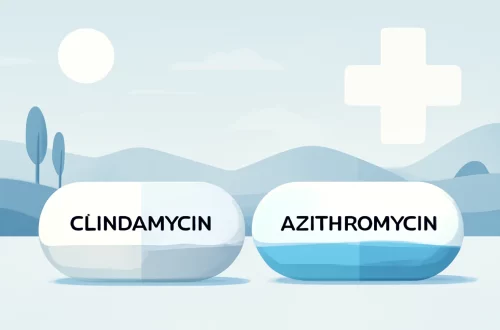
Toxins That Cause Kidney Failure in Dogs You Should Know About
Kidney failure is a serious health issue that can affect dogs of all breeds and ages. This condition can be caused by various factors, including genetic predisposition, age, and, most importantly, exposure to certain toxins. The kidneys play a vital role in filtering waste products from the bloodstream, regulating electrolytes, and maintaining overall fluid balance in the body. When they are compromised, it can lead to severe health complications, making it crucial for dog owners to be aware of the common toxins that can result in kidney failure.
Understanding the potential dangers in your environment can help you prevent accidental poisoning. Toxins can be found in everyday items, household products, and even certain foods that may seem harmless. Awareness and education are key components of protecting your furry companion from these hazardous substances. By taking proactive measures, you can significantly reduce the risk of kidney failure in dogs, ensuring that they lead healthy and happy lives.
In this article, we will explore the various toxins that can cause kidney failure in dogs, providing insights into their sources, symptoms of poisoning, and what you can do to keep your pet safe.
Common Household Toxins
Many household items that we use daily can pose serious health risks to our pets. Cleaning products, such as bleach, detergents, and disinfectants, are often potent chemicals that can cause kidney damage when ingested or absorbed through the skin. When dogs are exposed to these substances, especially in large quantities, they can experience gastrointestinal upset, lethargy, and in severe cases, kidney failure.
It’s essential to store these products in secure cabinets and to use pet-safe alternatives whenever possible. Even seemingly innocuous items, like certain air fresheners and scented candles, can contain harmful chemicals that may disrupt your dog’s health. Always check labels for ingredients that could be toxic to pets, and consider using natural alternatives to keep your home smelling fresh without compromising your dog’s safety.
In addition to cleaning supplies, medications like non-steroidal anti-inflammatory drugs (NSAIDs) can be particularly harmful to dogs. These medications, often used to treat pain in humans, can lead to acute kidney injury if ingested by dogs. If you suspect that your dog has ingested any potentially harmful substances, it’s critical to contact a veterinarian immediately. Early intervention can make a significant difference in the outcome of poisoning cases.
Plants and Garden Hazards
Many common plants found in gardens and homes can be toxic to dogs. For example, lilies, azaleas, and tulips are beautiful but can cause severe kidney damage if ingested. Lilies, in particular, are extremely toxic to cats, but they can also affect dogs, leading to vomiting, diarrhea, and abdominal pain. Other garden plants, such as sago palms, contain toxins that can cause liver and kidney failure.
To keep your dog safe, familiarize yourself with the plants that are toxic to pets. If you have a garden or houseplants, consider replacing them with non-toxic varieties that provide a safe environment for your furry friend. Regularly inspecting your garden for any plants that may pose a risk is also a good practice.
In addition to plant toxins, fertilizers and pesticides can introduce harmful chemicals into your dog’s system. Many of these products contain ingredients that are dangerous when ingested. Always opt for pet-safe options and take precautions when applying these substances in your garden, ensuring that your dog is kept away from treated areas until they are safe.
Human Foods That Are Harmful to Dogs
Certain foods that are safe for human consumption can be extremely harmful to dogs and can lead to kidney failure. Grapes and raisins, for instance, are well-known for their potential to cause acute kidney failure in dogs. Even small amounts can lead to severe health issues, including vomiting, diarrhea, and lethargy, often requiring immediate medical attention.
Another food to be cautious of is chocolate, which contains theobromine, a compound toxic to dogs. The severity of chocolate poisoning depends on the type of chocolate and the amount ingested, but it can lead to serious health issues, including kidney damage. Other foods such as onions, garlic, and avocados also pose a risk to your dog’s health. These foods contain compounds that can lead to hemolytic anemia and kidney issues, respectively.
To ensure your dog remains healthy, it is vital to stick to a diet specifically formulated for canine nutrition. If you want to treat your dog to human food, always consult with your veterinarian first. They can provide guidance on which foods are safe and appropriate for your pet’s dietary needs.
Preventive Measures and What to Do in Case of Exposure
Preventing exposure to toxins is the best way to protect your dog from kidney failure. Educate yourself about the common household items, plants, and foods that are harmful to dogs. Always ensure that harmful substances are stored safely out of reach.
In addition to being proactive, knowing the signs of poisoning is crucial. Symptoms can vary based on the toxin but may include vomiting, diarrhea, lethargy, increased thirst, and changes in urination. If you notice any of these signs, do not hesitate to reach out to your veterinarian for advice.
If you suspect your dog has ingested something toxic, try to identify the substance and provide that information to the vet. This can help them determine the best course of action. Do not attempt to induce vomiting unless instructed by a professional, as some toxins can cause more damage if vomited.
Keeping emergency contact information for your veterinarian and a local animal poison control center readily available can also be beneficial. Quick access to help can be life-saving and can ensure that your dog receives the care they need without delay.
In conclusion, while there are many toxins that can lead to kidney failure in dogs, awareness and education can significantly mitigate these risks. By understanding the dangers present in your environment, you can take proactive measures to keep your furry friend safe.
**Disclaimer:** This article is for informational purposes only and does not constitute medical advice. Always consult with a veterinarian for health-related concerns regarding your pet.




